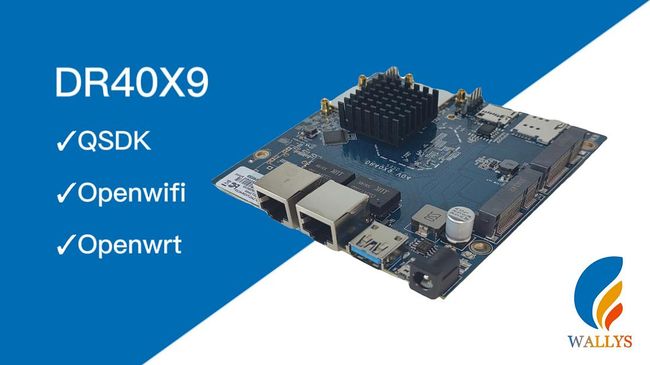Enhancing Vehicle Connectivity: Overcoming Challenges of 4G/LTE Connectivity in Dense Urban Areas
In the modern era, vehicular connectivity has become an indispensable aspect of our lives. From navigation to infotainment and remote diagnostics, vehicles rely heavily on stable and high-speed 4G/LTE connectivity. However, challenges persist, particularly in dense urban environments where network congestion and bandwidth limitations often lead to connectivity issues. This article explores the need for a long-range solution to address these challenges and ensure consistent vehicle connectivity even in bustling cityscapes.
The Challenge: 4G/LTE Connectivity Issues in Urban Areas
Dense urban environments pose unique challenges to maintaining reliable 4G/LTE connectivity for vehicles. As vehicles navigate through high-rise buildings, narrow streets, and numerous obstacles, the signal strength can significantly deteriorate, resulting in connection drops and slow data transmission. Additionally, during peak hours when network traffic surges, vehicles struggle to establish a stable connection due to bandwidth limitations and network congestion.
The Consequences of Inadequate Connectivity
Inadequate vehicle connectivity can lead to a range of issues, affecting both drivers and passengers. Navigation systems may fail, causing confusion and delays. Infotainment systems may suffer from interrupted streaming, depriving occupants of entertainment options. Moreover, essential features such as remote diagnostics and software updates could be compromised, hindering maintenance and performance optimization.
Introducing the Long-Range Connectivity Solution
To combat these challenges, the development of a long-range connectivity solution emerges as a vital strategy. This solution aims to extend the reach of 4G/LTE signals to ensure seamless connectivity for vehicles, even in densely populated urban areas. The solution consists of two key components:
Signal Boosting Technology: Employing advanced signal boosting technologies, such as signal repeaters and amplifiers, can enhance the strength of 4G/LTE signals. These technologies capture weak signals and amplify them, ensuring that vehicles maintain a steady connection while passing through signal-deprived zones.
Network Offloading and Load Balancing: Implementing intelligent network offloading and load balancing mechanisms can help alleviate network congestion. By strategically redirecting traffic from overloaded towers to less burdened ones, the solution optimizes network performance during peak usage periods.
Benefits of the Solution
Implementing a long-range connectivity solution for vehicles in dense urban areas offers a plethora of benefits:
Seamless Connectivity: By improving signal strength and extending coverage, the solution ensures uninterrupted connectivity, enhancing the overall driving experience.
Enhanced Safety: Vehicle-to-infrastructure (V2I) and vehicle-to-vehicle (V2V) communication systems heavily rely on stable connectivity. The solution enhances safety by facilitating swift and reliable data exchange between vehicles and infrastructure.
Efficient Data Exchange: With improved connectivity, remote diagnostics, software updates, and data transmission become more efficient, allowing manufacturers to offer better services and performance optimization.
Customer Satisfaction: Reliable connectivity enhances the user experience, leading to higher customer satisfaction and loyalty.
In the face of urban connectivity challenges, a long-range solution emerges as a necessity to ensure consistent and reliable 4G/LTE connectivity for vehicles. As technology evolves, the implementation of signal boosting technologies and intelligent network management strategies promises to revolutionize vehicular connectivity, enabling vehicles to seamlessly navigate the bustling streets of dense cities. By overcoming the limitations of network congestion and bandwidth constraints, the long-range solution paves the way for a future where vehicular connectivity remains uninterrupted, regardless of the urban landscape.
Wallys Long-Distance WiFi wireless solution
Wallys DR6018 Series Router Board Now Supports 23km Long Distance Transfer, Perfect for 5G Base Stations and Networking Applications.
DR6018
Key Feature
Qualcomm-Atheros IPQ6010
Quad-core ARM 64bit A53 @1.8GHz Processor
1GB DDRL3L System Memory
32MB NOR Flash, 256MB NAND Flash
Supports Dynamic Frequency Selection (DFS)
2x2 On-board 2.4GHz radio, up to 573Mbps physical Data Rate
2x2 On-board 5GHz radio, up to 1201Mbps physical Data Rate
Support: QUECTEL RM500Q-GL
Support: QCN9074 WiFi 6E Card
Support Openwifi
Support QSDK
https://www.wallystech.com/Routerboard/DR6018V4-wifi6-Qualcom...![]()
Wallys DR4019 Series Router Board Now Supports 20km+ Long Distance Transfer.
DR40X9
Key Feature
Featuring with industrial-grade IPQ4019/IPQ4029 chipset
Integrated with 2x 2 5G high power Radio module and 2x2 2.4G high power Radio module
Support 4.940GHz to 5.825GHz Frequency Range
Support 2.400GHz to 2.482GHz
Support 2 x 5G MMCX Connectors and 2x2.4G MMCX
Support 5MHz/10MHz/20MHz/40MHz/80MHz Bandwidth
Support 11ABGN/AC
Support fixed data rate
RoHS compliance ensure a high level protection of human health and the environment from risks that can be posed by chemicals
Our Firmware supports all the modules of Quectel
Support Openwifi
Support QSDK
Support Openwrt
https://www.wallystech.com/Routerboard/DR40X9-Qualcomm-IPQ401...
For more information and inquiry,please contact wallys team directly.
Email:[email protected]
Website:https://www.wallystech.com/